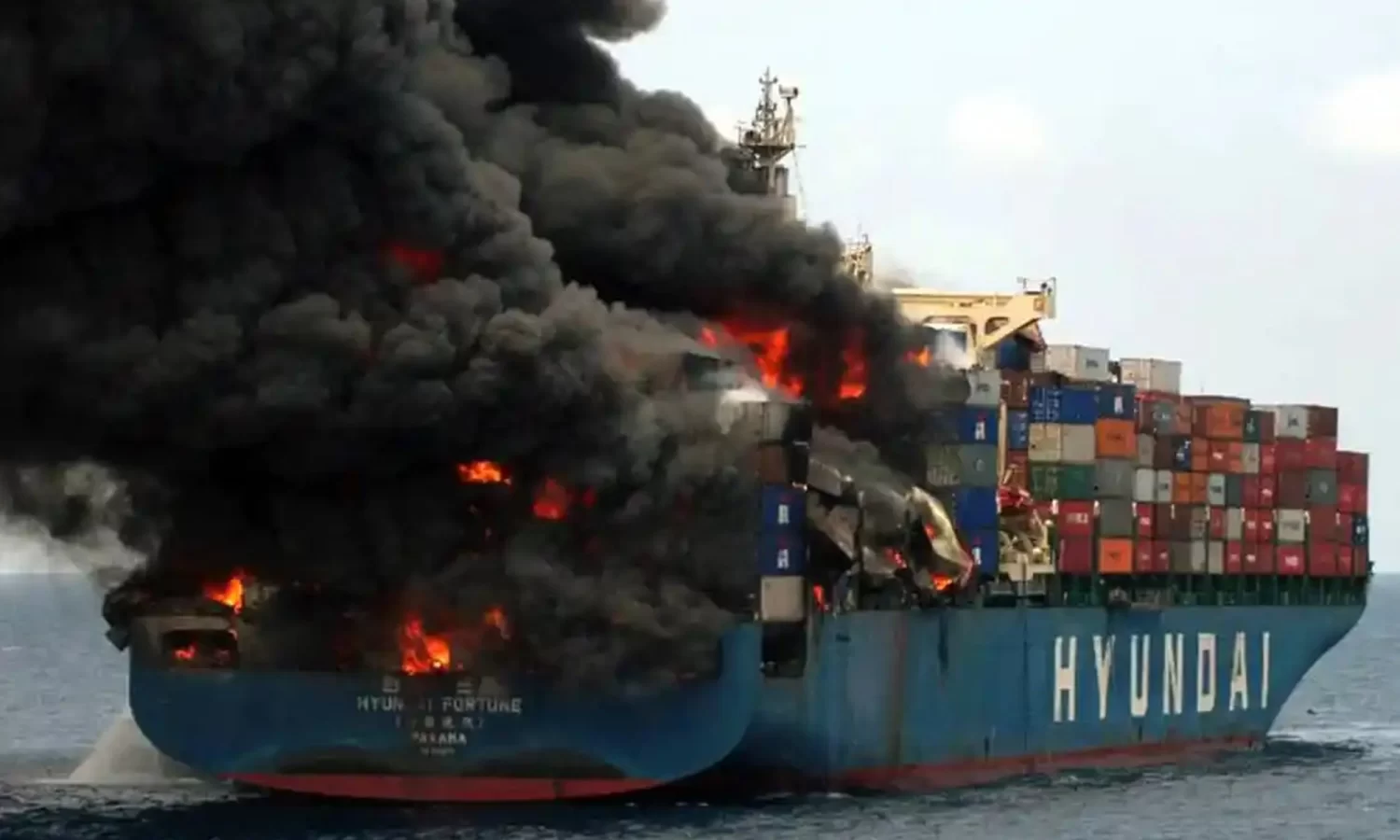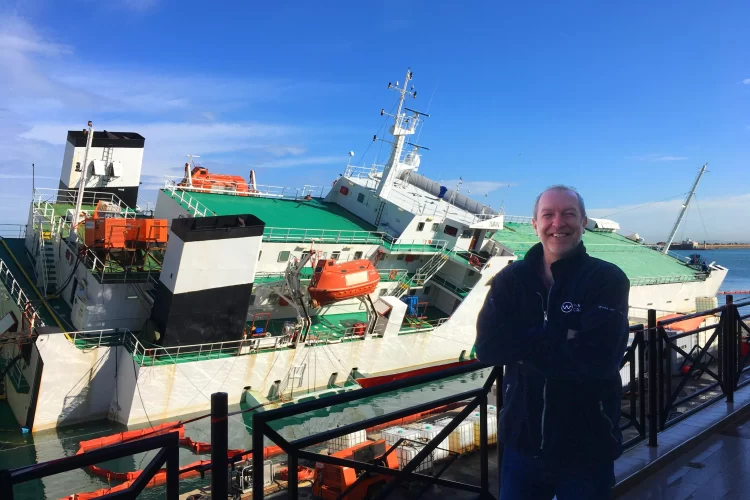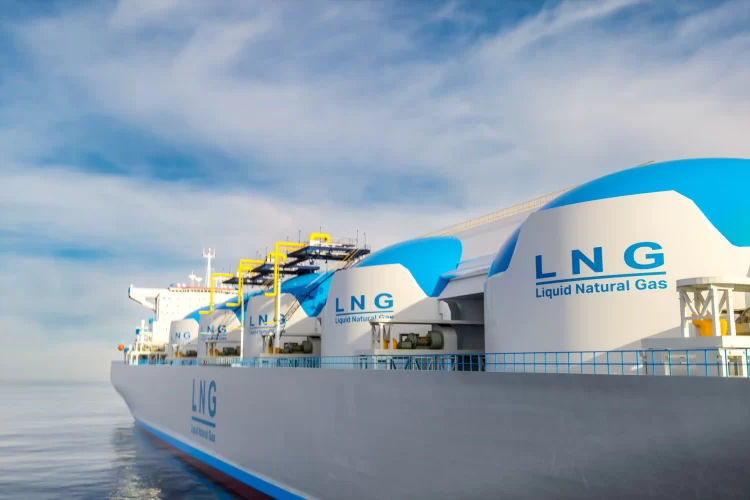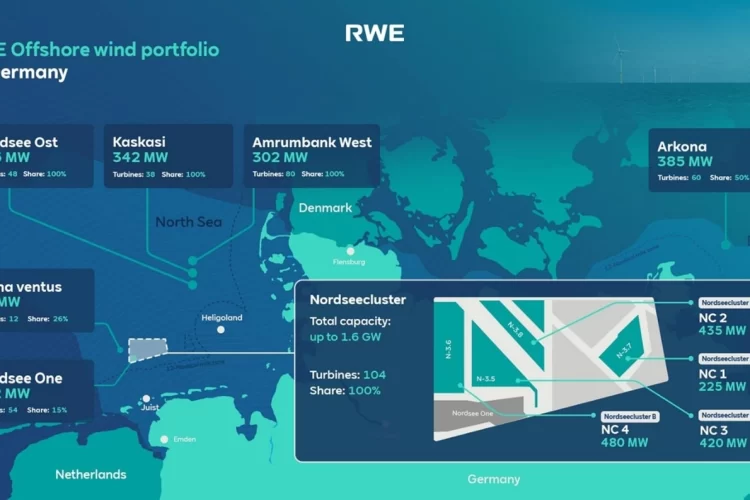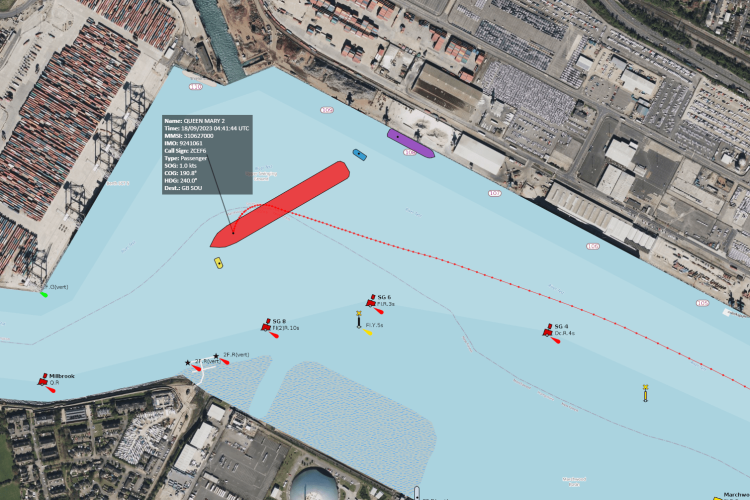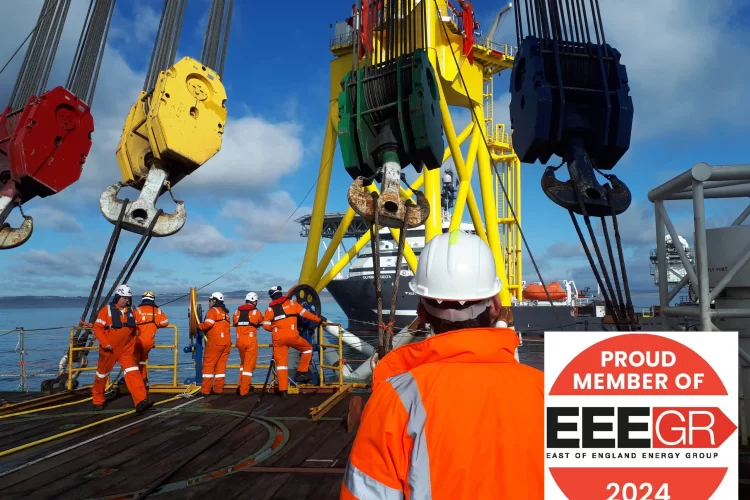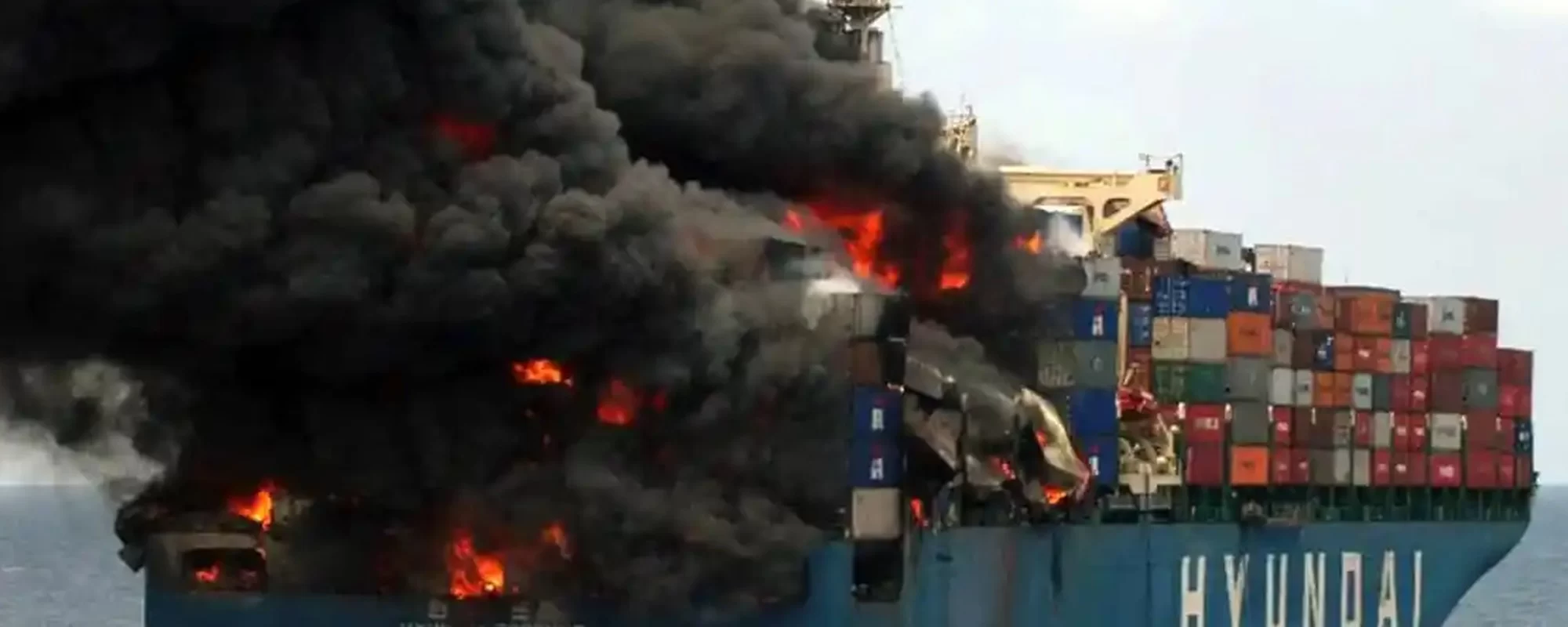
Transportation of Dangerous Cargo on Ships and Containerisation: An Overview of Container Ship Fires
The advent of containerisation in the mid-20th century revolutionised global shipping by dramatically reducing loading and unloading times, minimising cargo damage, streamlining logistics, and enhancing overall efficiency. Today, 90% of global trade is conducted via vessels, and while the use of containers offers numerous advantages, it also poses significant risks, particularly when transporting hazardous materials such as charcoal, radioactive substances, and lithium-ion batteries. The complexities involved in handling these dangerous cargoes, combined with the potential for misdeclaration, greatly increase the risk of fire.
Standardised container sizes, (most common 20 or 40 feet in length), facilitate easy stacking and maximise space on vessels. Containerisation has become the backbone of global trade, with millions of containers in circulation worldwide every year, carrying everything from consumer goods to raw materials.
Dangerous Goods: Definition and Types
The International Maritime Dangerous Goods (IMDG) Code was developed in collaboration with the SOLAS and MARPOL conventions as a global standard for the safe transportation of dangerous goods by sea in packaged form. Its purpose is to enhance the safety of maritime transport and prevent environmental pollution. Dangerous goods, also referred to as IMDG cargo or hazardous materials (HazMat), are substances that pose significant risks to health, safety, property, or the environment during transportation. These materials are classified based on their physical and chemical properties and are regulated by international bodies such as the International Maritime Organization (IMO).
There are nine classes of dangerous goods, which include:
- Explosives
- Gases (flammable, non-flammable, and toxic)
- Flammable liquids
- Flammable solids (self-reactive substances and desensitized explosives)
- Oxidizing substances and organic peroxides
- Toxic and infectious substances
- Radioactive materials
- Corrosive substances
- Miscellaneous dangerous goods (e.g., lithium batteries)
Transporting these materials requires strict adherence to safety regulations, including proper labelling, packaging, stowage and segregation to prevent accidents during transit.
Risks Associated with Transporting Dangerous Cargo
The transportation of dangerous goods on container ships is fraught with risks, primarily due to the potential for accidents that can lead to fires, explosions, or environmental contamination. Some of the key risks include:
- Misdeclaration or Mislabelling: One of the most significant risks is the misdeclaration or mislabelling of hazardous materials, which can lead to improper stowage and increase the likelihood of accidents. Shippers may underreport the danger posed by their cargo to save on overall costs of transportation, leading to severe consequences.
- Improper Packaging: If dangerous goods are not properly packaged, they can leak, react with other substances, or ignite, leading to fires or explosions on board.
- Poor Stowage: Improper stowage of dangerous cargo can result in the cargo shifting, coming into c ontact with incompatible substances, or being exposed to heat sources, all of which can trigger hazardous reactions.
- Human Error: Mistakes by crew members or stevedores in handling and stowing dangerous cargo can also contribute to accidents.
Container Ship Fires: Causes and Consequences
Container ship fires are among the most devastating accidents at sea, often resulting in loss of life, having severe environmental impact, and causing substantial financial losses. According to the Cargo Incident Notification Systems (CINS), in 2023, there was an alarming increase in container fires, with an average of one fire occurring every nine days, up from one every two weeks in 2020.
In early 2024, there was a notable reduction in large-scale ship fires, but this trend reversed during the summer months, with three major incidents tragically resulting in loss of life: the Northern Juvenile in Singapore, the Maersk Frankfurt in India, and a major explosion on the YM Mobility in China.
Once a fire starts on a container ship, it can be particularly difficult to control due to the sheer size of the vessels and the challenges in accessing the fire’s source within stowed containers. It became even more challenging when the vessel is at sea and has limited resources in terms of manpower and firefighting equipment to control and suppress the fire.
Common Causes of Container Ship Fires
Container ship fires can occur due to various factors, each posing significant risks in maritime transport. One common cause is the self-heating of certain hazardous materials, such as specific chemicals and flammable solids, which can ignite without an external ignition source. This risk is heightened when these materials are improperly stowed or packaged. Additionally, electrical faults in the ship’s systems, unsafe equipment or short circuits, can potentially ignite nearby flammable materials and lead to a fire.
Another critical concern is the chemical reactions that can occur when incompatible dangerous goods are inadvertently stored together. For example, placing oxidizing agents near flammable substances can create a highly combustible environment, leading to fires or explosions. The misdeclaration of dangerous goods further exacerbates these risks, as undeclared hazardous materials might be stowed incorrectly, increasing the likelihood of dangerous interactions which can cause fires. External heat sources, such as welding operations on the ship, lightning strikes, or other heat sources, also pose a threat, as they can ignite fires that spread rapidly across the vessel.
Consequences of Container Ship Fires
Fires on container ships pose serious threats, often resulting in loss of life and severe injuries among crew members. The remote location of these vessels at sea makes rescue operations challenging, intensifying the danger. In addition to the immediate human impact, these fires can cause significant environmental damage. When hazardous substances are released into the ocean, they can pollute the water, harm marine life, and have lasting ecological consequences.
The economic impact of container ship fires is equally severe. Financial losses can be substantial, including the destruction of the ship, loss of cargo, and potential legal liabilities. Insurance claims related to such incidents often amount to millions of dollars. Furthermore, these fires can disrupt global trade, particularly if the vessel is transporting critical goods or blocks strategic maritime routes or ports. Such disruptions can lead to delays and shortages across various industries, compounding the economic fallout.
Mitigating the Risks: Regulations and Best Practices
To address the risks associated with transporting dangerous cargo, several international regulations and best practices have been developed. These include:
- International Maritime Dangerous Goods (IMDG) Code: The IMDG Code, developed by the IMO, provides regulation for the safe transport of dangerous goods by sea. It covers classification, packaging, labelling, and stowage requirements for hazardous materials.
- Container Inspection and Verification: Regular inspection and verification of containers before loading can help identify mis-declared or improperly packed dangerous goods, reducing the risk of accidents.
- Crew Training: Proper training of crew members in the handling of dangerous goods, firefighting, and emergency response is crucial for preventing and managing container ship fires.
- Fire Detection and Suppression Systems: Fire detection and suppression systems on container ships can help detect and suppress fires before they spread. These systems include water spray and CO2-based suppression systems.
- Improved Stowage Plans: Careful and protective planning of container stowage, including the separation of incompatible dangerous goods and the placement of hazardous materials in accessible locations, can reduce the risk of fires.
The transportation of dangerous cargo on container ships poses significant risks, especially in the event of a fire. As global trade expands, strict adherence to safety regulations and best practices is crucial. Proper declaration, packaging, labelling, stowage, and crew training are essential in mitigating the risks associated with dangerous goods and preventing the catastrophic consequences of container ship fires. As new challenges emerge, ongoing improvements in safety standards and technologies will be vital to protecting lives, property, and the environment.
HAZMAT Guidance and Fire Investigations
At Waves Group, our experienced team of Master Mariners, our fire and hazardous materials (HazMat) experts have successfully provided initial HazMat response advice to vessel Masters, followed by on-site guidance to local container terminals, authorities and other parties involved in the incident, including comprehensive risk assessments.
Our HazMat guidance is based on several key resources, including the International Maritime Dangerous Goods (IMDG) Code, Chemdata, the Emergency Response Guidebook (ERG 2024), safety data sheets, Cameo, UK Government standards, Public Health England, and other chemistry reference guides.
We conduct 10-point risk assessments which cover critical aspects such as physical properties of the materials, worst-case scenarios, hazards, personal protective equipment (PPE), tactics and decontamination strategies, risk control, environmental protection, coordination with other parties, and post-incident procedures.
The proactive advice provided by our team has been instrumental on several occasions in the avoidance of a very serious situation from deteriorating further and a fire or an explosion occurring.
In addition, our fire experts offer detailed emergency response plans, including command and control strategies, firefighting techniques, and coordination with shoreside firefighters. This enables vessel Masters’ to safely contain fires and maintain boundary cooling.
Our team is also actively involved in the investigations of major ship fire incidents and are contributing to the development of operational guidelines in partnership with international marine advisory groups, including CINS and the UK Chamber of Shipping.
For further information on our fire and HazMat expertise, please contact Paul Coates, Nigel James, Capt. Stanislav Ivanov or telephone our 24/7 emergency response line +44 (0) 20 7083 7266.
